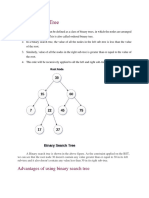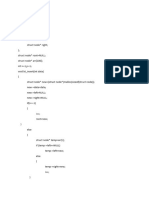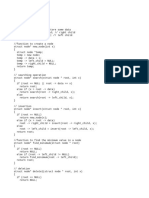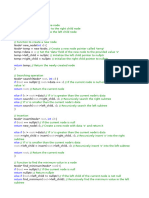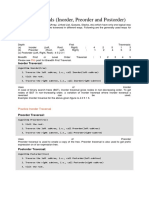0% found this document useful (0 votes)
218 views6 pagesBinary Tree Lab Report CS-201
This lab report discusses binary trees and their implementation. It includes code to create a binary tree, insert nodes, and traverse the tree using preorder, inorder, and postorder traversal. Functions are also included to find the minimum value node, delete a node, and test the deletion functionality. The conclusion states that major binary tree functions were implemented including insertion, deletion, and traversing to understand this important data structure.
Uploaded by
Armughan AliCopyright
© © All Rights Reserved
We take content rights seriously. If you suspect this is your content, claim it here.
Available Formats
Download as PDF, TXT or read online on Scribd
0% found this document useful (0 votes)
218 views6 pagesBinary Tree Lab Report CS-201
This lab report discusses binary trees and their implementation. It includes code to create a binary tree, insert nodes, and traverse the tree using preorder, inorder, and postorder traversal. Functions are also included to find the minimum value node, delete a node, and test the deletion functionality. The conclusion states that major binary tree functions were implemented including insertion, deletion, and traversing to understand this important data structure.
Uploaded by
Armughan AliCopyright
© © All Rights Reserved
We take content rights seriously. If you suspect this is your content, claim it here.
Available Formats
Download as PDF, TXT or read online on Scribd
/ 6




